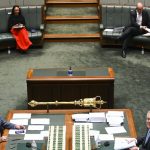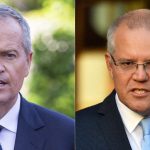Are senior Australians being squeezed by the cost of living?
The cost of living remains a major political and social issue for older Australians. The rising cost of health care in particular is a concern for an ageing population, says Dr Tim Adair from National Seniors Australia.
The story of the ageing population in Australia is largely positive. People are living longer and are largely healthier than previous generations. As a result they are more likely to be able to continue to be productive in both paid and unpaid work if they choose to do so.
Despite this, in recent years Australians aged 50 years and over have faced increasing cost of living pressures. Seniors can be significantly affected by rising costs because many have low and/or fixed incomes.
The National Seniors Productive Ageing Centre (NSPAC) has published a range of research into cost of living issues of senior Australians. A NSPAC report, Are Older Australians Being Short Changed? An Analysis of Household Living Costs written by Professor Simon Kelly of the University of Canberra, found that the prices of groceries, utilities and healthcare have risen more quickly than inflation in recent years. Further, over 750,000 senior households spend more than half their income on just these three essential items.
The cost of healthcare is unsurprisingly an issue for this population, especially with the increasing burden of multiple chronic illnesses. Although Medicare covers a significant proportion of the Australian population’s health costs, many seniors with multiple chronic illnesses face large out-of-pocket health expenses. Research published by NSPAC authored by Dr Ian McRae and Ms Laurann Yen from the Australian National University found that about a quarter of a million people aged 55 years and over spend more than 20% of their income on health. Also, people with five or more chronic conditions, who tend to have lower incomes, spend almost six times as much on health as people with no chronic conditions.
The cost of prescription medicines are also a significant problem for many senior Australians. A report authored by NSPAC researchers Dr Tim Adair, Lea Ortega and Dr Jeromey Temple, entitled Senior Australians and Prescription Medicines: Usage, Sources of Information and Affordability, shows that a lack of affordability of medicines is most acutely felt by younger age groups (especially aged 50-64 years), people earning a low income and those of poorer health. For example, 35% of people aged 50-64 years earning a low income report financial strain from their prescription medicines, compared with 15% of low income earners aged 65 years and over.
A worrying consequence of financial pressures caused by the cost of medicines is that many senior Australians undertake risky cost saving strategies which may affect their health, such as delaying taking prescription medicines, rationing intake of medication or not filling scripts at all.
What is certain is that the cost of living, and in particular the cost of health care and prescription medicines, is a major political and social issue for older Australians. NSPAC research has found that 55% of respondents stating that their voting preferences at the next Federal election would be impacted by having to pay more for prescription medicines due to reduced Government subsidies. Health costs are likely to be an even greater political issue as the population continues to age.
Dr Tim Adair is the Director of National Seniors Australia. He is a demographer with extensive experience, both in Australia and internationally, working within the government, university and private sectors. He has a PhD in Demography from the Australian National University and completed a Postdoctoral Fellowship at the MEASURE DHS Program at Macro International (now ICF Macro) in the USA.













